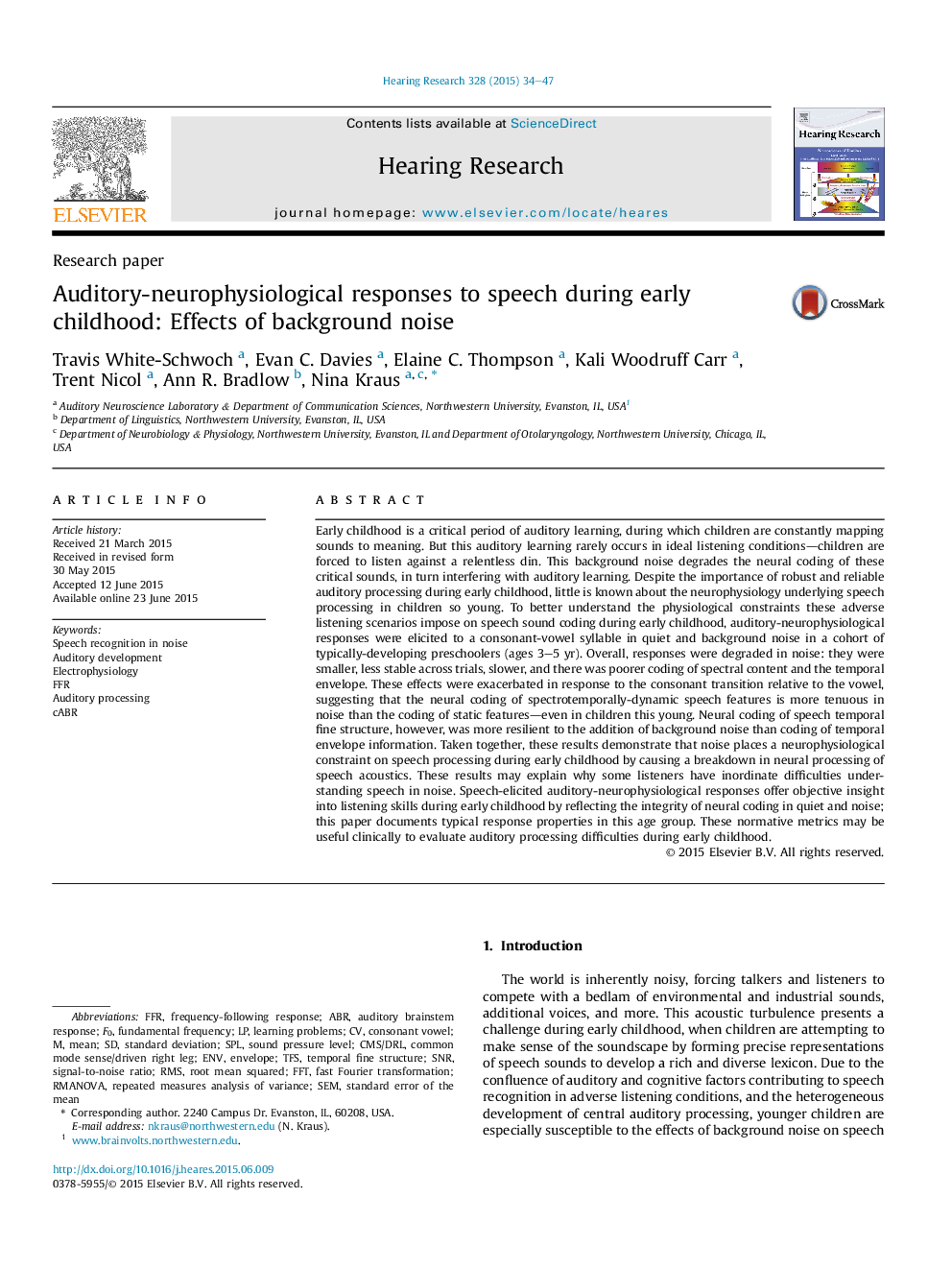| کد مقاله | کد نشریه | سال انتشار | مقاله انگلیسی | نسخه تمام متن |
|---|---|---|---|---|
| 6287269 | 1615572 | 2015 | 14 صفحه PDF | دانلود رایگان |
- Auditory-neurophysiological responses to a CV syllable in quiet and noise in preschoolers.
- Noise degraded response quality, especially for response to the consonant transition vs. vowel.
- May be why consonants are more difficult to recognize than vowels in adverse listening conditions.
- May offer an objective index of the physiological constraints on to speech processing in quiet and noise.
Early childhood is a critical period of auditory learning, during which children are constantly mapping sounds to meaning. But this auditory learning rarely occurs in ideal listening conditions-children are forced to listen against a relentless din. This background noise degrades the neural coding of these critical sounds, in turn interfering with auditory learning. Despite the importance of robust and reliable auditory processing during early childhood, little is known about the neurophysiology underlying speech processing in children so young. To better understand the physiological constraints these adverse listening scenarios impose on speech sound coding during early childhood, auditory-neurophysiological responses were elicited to a consonant-vowel syllable in quiet and background noise in a cohort of typically-developing preschoolers (ages 3-5Â yr). Overall, responses were degraded in noise: they were smaller, less stable across trials, slower, and there was poorer coding of spectral content and the temporal envelope. These effects were exacerbated in response to the consonant transition relative to the vowel, suggesting that the neural coding of spectrotemporally-dynamic speech features is more tenuous in noise than the coding of static features-even in children this young. Neural coding of speech temporal fine structure, however, was more resilient to the addition of background noise than coding of temporal envelope information. Taken together, these results demonstrate that noise places a neurophysiological constraint on speech processing during early childhood by causing a breakdown in neural processing of speech acoustics. These results may explain why some listeners have inordinate difficulties understanding speech in noise. Speech-elicited auditory-neurophysiological responses offer objective insight into listening skills during early childhood by reflecting the integrity of neural coding in quiet and noise; this paper documents typical response properties in this age group. These normative metrics may be useful clinically to evaluate auditory processing difficulties during early childhood.
Journal: Hearing Research - Volume 328, October 2015, Pages 34-47
